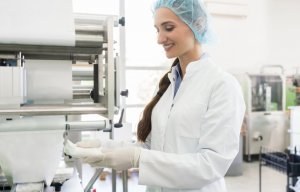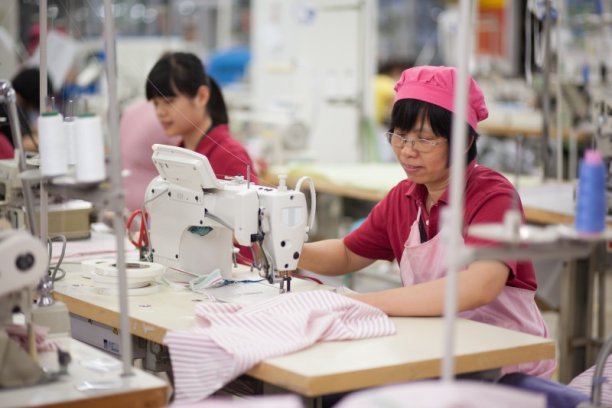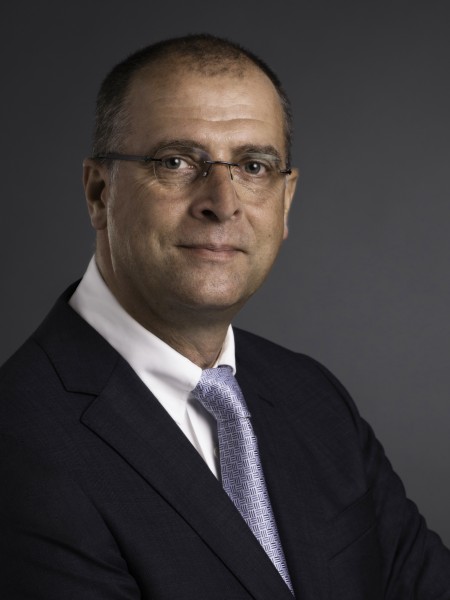
OEKO-TEX waives certification fee for face masks
Georg Dieners talks about his first months in office and the challenges faced by the textile industry and Oeko”Tex in the future.

6th July 2015
Innovation in Textiles
|
Zurich
Talking Heads is a brand new Innovationintextiles.com column, which features interviews with the industry’s movers and shakers. This edition of Talking Heads features an interview with Georg Dieners, General Secretary of the international Oeko”Tex Association based in Zurich, Switzerland.
 In the past, Oeko”Tex was synonymous with the Oeko”Tex Standard 100 and its Confidence in Textiles label, both for companies in the textile industry and retailers and consumers. What steps has Oeko”Tex taken to continue the development of its existing services and supplement them with new products?
In the past, Oeko”Tex was synonymous with the Oeko”Tex Standard 100 and its Confidence in Textiles label, both for companies in the textile industry and retailers and consumers. What steps has Oeko”Tex taken to continue the development of its existing services and supplement them with new products?GD: Oeko”Tex has in fact constantly been adding more and more certification systems, including both supplementary systems and systems that have built on previous ones. For instance, we have been auditing production facilities with regard to environmental compatibility and social standards since 1995. In that respect, our international institutes have decades of experience in the area of sustainability. We have been able to utilize that experience, together with feedback from the market, in the further development of our overall system, which consists of the Oeko”Tex Standard 100, STeP, Made in Green, and MySTeP. As a result, we can now offer our customers a comprehensive and practical solution to the ever-rising requirements of the textile industry.
GD: Politicians, the media, and NGOs are pushing for changes in textile production to make it more socially responsible and environmentally friendly. Consumers themselves are much more conscious of what they are buying. At the same time, supply relationships are very complex nowadays and can span across the whole world. They have to become more transparent to increase the level of confidence in the textiles industry.
GD: The aim is always to ensure safety and, as a result, confidence. The basis for that may be an exclusion list for harmful substances which the companies have established themselves, like the Restricted Substances List (RSL). Likewise, normative provisions at an international level or industry-based commitments can help to achieve this aim. However, in each case it is vital that there is a neutral testing and certification process. That is what the Oeko”Tex solution packages provide. They reduce complexity for the textile industry and offer consumers, the media, and NGOs the necessary level of traceability and transparency.
GD: To make the textile and clothing industry more sustainable, politicians, NGOs, and the companies in the industry all have to pull in the same direction. Since the action plan was modified in April, significant associations and a large number of notable companies from the textile industry have joined the partnership. That is an important step and we welcome it. To continue our support for this multi-stakeholder approach in the future, the international Oeko-Tex Association is also now a member of the Textiles Partnership through the Oeko-Tex Foundation.
GD: We share the central objectives of the Partnership and support the Partnership members in their efforts to achieve continual improvements to existing processes and working conditions in textile production around the world. Thanks to its comprehensive system, Oeko”Tex covers the full textile production chain and is therefore an important partner in achieving these goals.
GD: For manufacturers, quality assurance is paramount, which means harmful substance testing according to the Oeko”Tex Standard 100 and production facility audits according to STeP. The closer they are to the end consumer, the more that marketing becomes important in addition to quality assurance.
The Oeko”Tex Standard 100 label helps brand manufacturers and retailers in particular to prove that their products are harmless to human ecology. The label offers consumers an important aid in their decision-making. If a company also wants to prove that a product has been tested for harmful substances and likewise has been produced sustainably, it can do so with the Made in Green label.
GD: Oeko”Tex has been established at an international level for some time and is extremely prevalent throughout the textile chain. Added to that are the high level of awareness and reputation of our brand, including with customers. The individual modules in our testing and certification systems compliment and build upon each other perfectly. They are tailored to a whole variety of different needs, from those of manufacturers of raw materials, spinning mills, weaving mills, and finishing facilities to manufacturers of ready-made-clothes, retailers, and brands. Each company can decide which services they want to use. The costs and expenses are then distributed along the production chain, because at each added value creation stage, only the value added to the product at that stage is tested in the laboratory.
GD: The most important issue is that the products are clearly positioned and delineated. In our case, the concept behind our range was that the products could build on and interconnect with each other. That allows us to create synergies both for our customers and us. The core of our overall system is and will remain the Oeko”Tex Standard 100.
GD: Our whole system is based on the same values: Confidence, independence, and passion for textile products. We take this approach at every stage from product development to communications. The aim here is also to pass on our positive image from the harmful substance testing to the whole product family. For us, an important aspect of this is strengthening the Oeko”Tex umbrella brand. We have made it a prominent part of the Made in Green label, together with the "Confidence in Textiles" message. This message provides a perfect summary of what our services stand for: We create confidence in textiles!
GD: The testing and certification system has proven itself over two decades, and even today the concept behind it is still perfectly suited to the market. Except for the established yearly revision of the test criteria, there won't be any changes in terms of content. We are only critically reviewing the design and concepts within the actual label at the moment. This is a sensitive area to review because the label is prominent worldwide and enjoys a high level of recognition. We are aware of that and we are treating it with due consideration.
GD: We are on the right path. The market feedback is positive and the number of certifications is increasing steadily. Our systems are letting us meet the requirements of today. Sustainability at all levels is a massive trend of the 21st century, and our new services let us cover it in full. That makes us and our customers fully equipped for the challenges of the future.
Georg Dieners has been General Secretary of the International Oeko”Tex Association since the start of 2015. He was previously employed as Director of Product Management at the LHD Group GmbH in Cologne, where he was responsible for product development for the global full-service provider for workwear and personal protective equipment.
Georg Dieners has the broad range of knowledge required for his new role as the Oeko-Tex General Secretary. Excellent industry and sector contacts as well as his previous employment activities related to sustainable textile production complete his specialist competences.
Based in Zurich, the International Oeko”Tex Association was founded in 1992 from the Austrian Institut für Ökologie, Technik und Innovation GmbH and the German Hohenstein research institute.
At present, 16 independent textile testing institutes are members of the Oeko”Tex Association, with offices in more than 60 countries. Up to now, more than 145,000 Oeko”Tex Standard 100 certificates have been issued – an average of 13,500 per year – and more than 10,000 companies in over 90 countries work together with Oeko”Tex to have their products tested for potentially harmful substances on a regular basis.
The STeP by Oeko”Tex certification for environmentally friendly and socially responsible production facilities and the MySTeP database as a management tool complete the Oeko” Tex product portfolio, ensuring sustainable production conditions along the textile delivery and value creation chain.
Further reading
Oeko-Tex offers customised solutions for German Textiles Partnership members
Oeko-Tex introduces new Made in Green label for product traceability
New Oeko-Tex Standard 100 regulations for 2015 come into force
New requirements for certification in accordance with STeP by Oeko-Tex

Business intelligence for the fibre, textiles and apparel industries: technologies, innovations, markets, investments, trade policy, sourcing, strategy...
Find out more